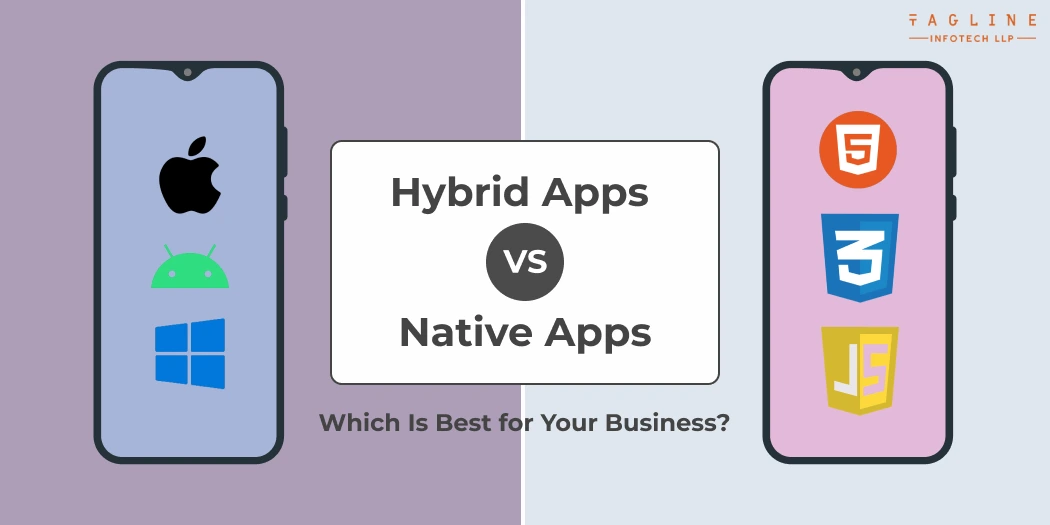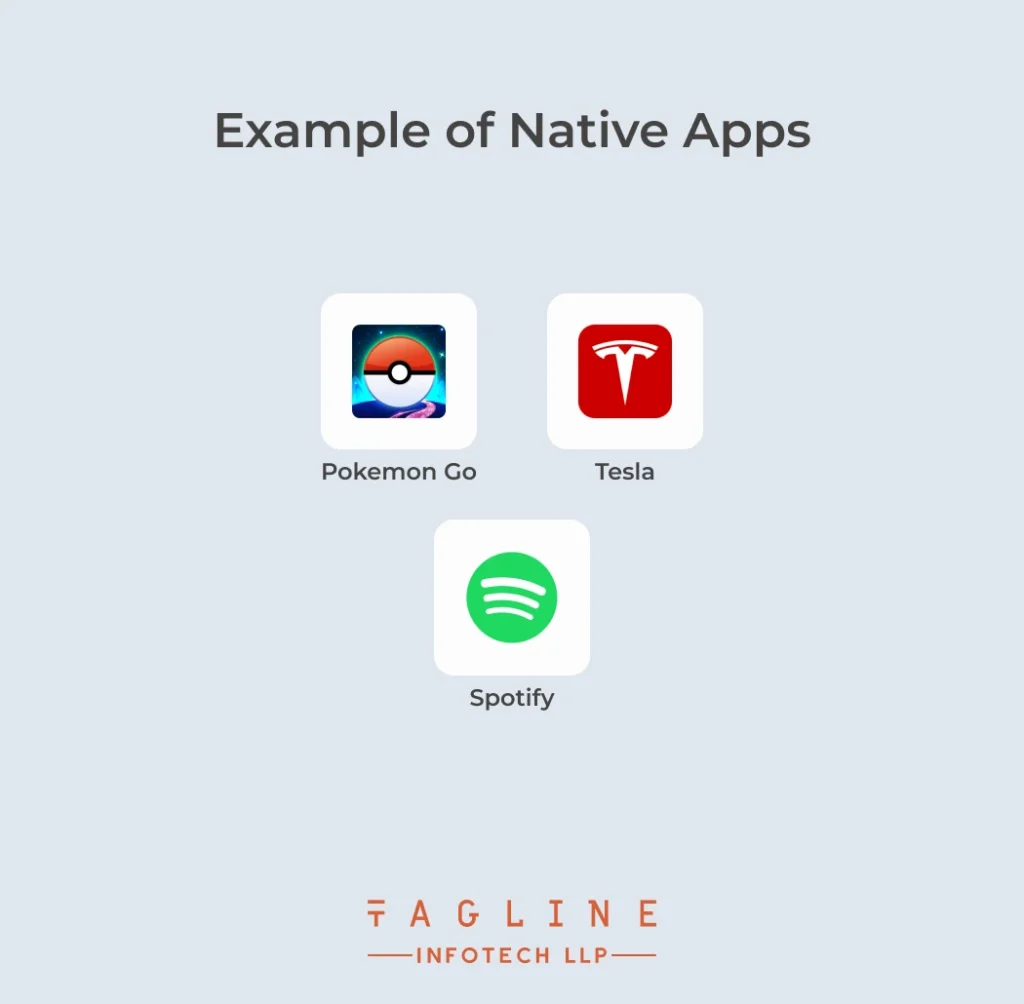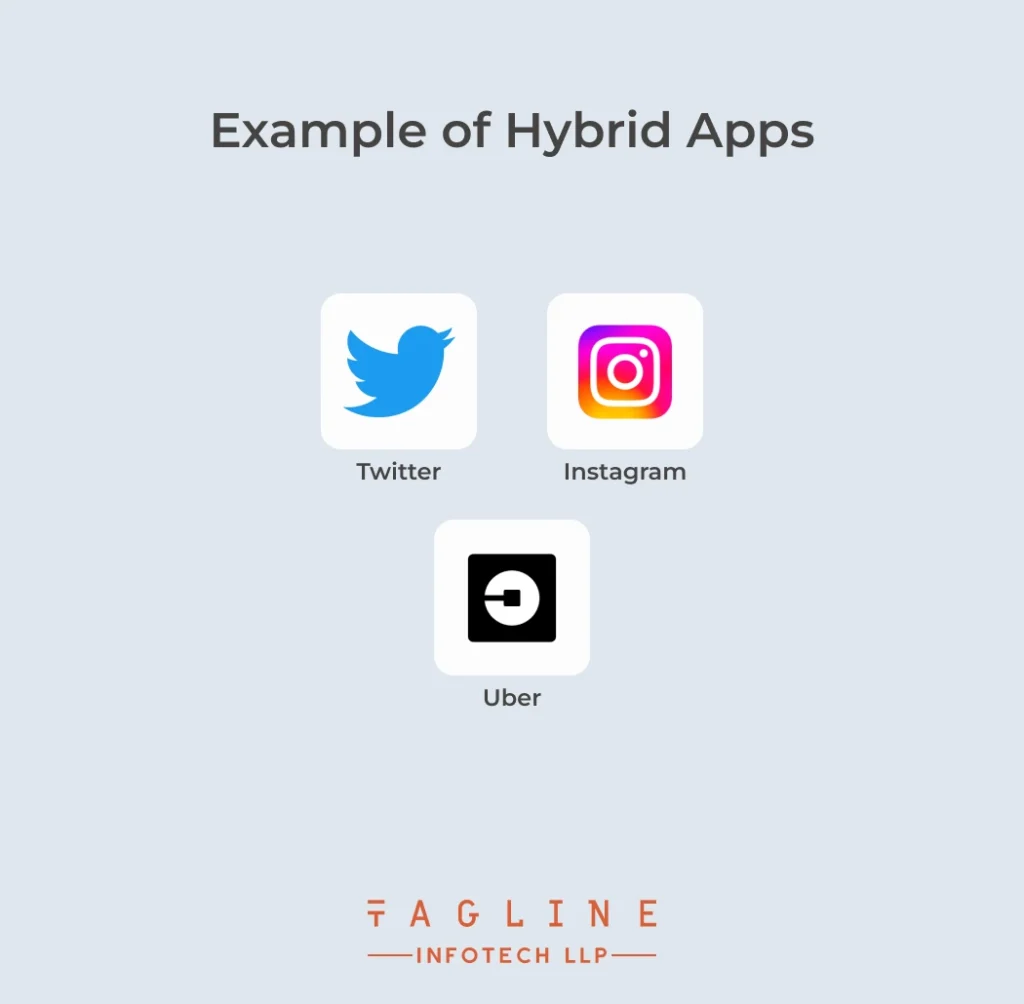Role of Python Libraries in Image Processing
October 30, 2025
Home >> Mobile App Development >> Hybrid Apps vs Native Apps: Which Is Best for Your Business?

Quick Summary
Many users work hard and conduct extensive market research to develop their mobile app idea but get confused about whether to choose a native or hybrid app for development. Both sides of the app development process have abundant features and functionalities, and they can both satisfactorily meet the needs of the app idea.
The debate of hybrid apps vs native apps is already intense and never-ending. However, choosing one over the other may be done by considering each app’s features, metrics, and other attributes in addition to its benefits and drawbacks.
Let’s start with the native apps:
Creating native applications for a given mobile operating system requires a specific programming language. For instance, iOS uses Objective-C or Swift, but Android uses Java. The application complies with all technical specifications and user experience best practices related to the particular operating system, having been developed in a secure environment. It ensures faster performance and a more simplified experience.
Furthermore, the few benefits that native applications offer are worth noting. It is easy to access and use the device’s features, such as the address book, camera, GPS, etc.
Here is the list of advantages and disadvantages related to the Native apps:

The website is considered the primary focus of hybrid app development. Even though they could look like a typical native app, these apps originate from a firm’s website. In web applications, hybrid apps are designed using JavaScript and HTML and then wrapped in a native app container. Most of the data displayed on that page is loaded when users travel through the app.
On the other hand, in contrast to a traditional web application, hybrid mobile applications can use native plugins to emulate the functionality of native applications without the need for additional scripting. Your application will be able to take advantage of the device’s inherent capabilities, such as the camera, the storage space for files, and the security features, such as fingerprint recognition or Face ID, all within a single build.
Furthermore, hybrid app developers adhere to the “write once, run anywhere” methodology, resulting in a hybrid app having lower expenses associated with its creation and maintenance than a native app.
Here is the list of advantages and disadvantages related to the Hybrid apps:

Difference Between Hybrid Apps and Native Apps
Here is the detailed difference between Hybrid and Native apps:
A company may start creating a mobile application because it wants to compete with other companies or thinks there may be a chance to make a commercial opportunity. Therefore, executives are keen to release the software onto the market as soon as feasible. That being said, rushing things through could lead to concessions. It is possible to use native or hybrid app development approaches when creating apps, but fully comprehending the process and considering the different scenarios is still essential.
If an organization can wait a few months before developing and delivering an application, then the native app development approach is the best choice. They perform exceptionally well, offer the highest level of security, and provide the most pleasurable experience.
In a different situation, where a company must publish and deploy its mobile application almost immediately, the hybrid development technique is the best option. Hybrid applications use a single source code and are subsequently deployed across several platforms. Furthermore, the time and effort required to design hybrid applications are minimal.
Native apps are made to work directly with the operating system, so they are far faster than hybrid apps. However, hybrid programs use a native wrapper, which decreases performance.
Nothing comes close to matching the performance of native programs. Native apps are substantially faster and have a better design. The mobile device’s content, graphic components, and application structure are all pre-loaded and available for use while browsing through an application, resulting in a seamless experience.
Conversely, all that is sent to the mobile device is the shell of a hybrid application, which may or may not have the necessary navigational elements. For the most part, data is loaded directly from the server.
Load balancing and server requests might affect a request’s performance. While load balance requests relate to the origin of the requests and whether or not a selected server is present, server requests describe the number of concurrent users using the same server. Experts believe that hybrid apps’ performance still needs to improve despite everything.
Unlike more conventional methods, the main focus of mobile app development today is the user experience. The most crucial thing is to create an app that doesn’t look like it was made yesterday. Anything that seems hard on the surface could irritate.
Remember that many have found it challenging to get used to their phones. Once they control their devices, they last want an unsettling app with unique features. They expect the apps, gestures, interactions, and visual cues to integrate seamlessly into the platform’s style guide.
Given the growing importance of the mobile app user experience, customers will likely respond negatively to an app. Some users may decide not to utilize the software once more, and some customers will switch to another mobile app and leave it with a negative rating.
The knowledge provided here is essential for understanding the tradeoffs between user experience while choosing between hybrid and native applications.
Operating systems vary when it comes to native mobile applications. Customized user experiences for new applications are becoming more and more crucial for businesses as they start the process of developing new ones.
When a hybrid application is released, the platform should be adaptable. It takes less time to market since it has a single code base and user interface and is easier to develop.
The user’s experience is the only thing that gets compromised. A user experience architect with extraordinary talent will need help to develop a mobile application that works with the most widely used operating systems, iOS and Android. For both operating systems, there are distinct style guidelines about tactical considerations.
Native app developers primarily use Java and Kotlin as their programming languages of choice when creating Android smartphone applications. Regarding development tools, the best options for code modification, automated testing, debugging, and other related duties are Android Studio and Android Development Tool.
Creating hybrid applications usually uses standard web technologies like HTML5, CSS, and JavaScript. The majority of these applications use backend and native selections. Hybrid app developers generally build their applications using one of three frames: Sencha Touch 2, Ioor, and Cordova.
Developing mobile applications necessitates a substantial time and resource commitment. Before investing your money, ensure you have the most experienced team of app developers on board and that you are well-versed in an application development guide. This will guarantee the success of creating the product of your dreams.
A skilled native app developer knowledgeable about the relevant operating systems, mobile devices, and languages like Objective C, Swift, Java, and Kotlin can produce professionally designed, flawlessly functioning, and free of bugs. You will require more developers to create native applications for different platforms.
On the other hand, adding features like the camera, push notifications, or GPS signals requires the use of premium hybrid app creation services and a deep technical knowledge of many devices on the part of the developers. If you want to create highly interactive user interfaces, acquiring skills in information architecture, user personas, and wireframing—all related to user interface and user experience—will be very beneficial.
The decision to create hybrid or native apps depends on several factors, such as performance requirements, development budget, target audience, user experience, and availability of device-specific features. The following are excellent illustrations of creating an application that best meets your company’s goals.
For projects, web applications are an affordable option.
If a large portion of your clientele is from your firm, you might consider developing a native app.
Your top focus should be ensuring a consistent user experience and native apps are one way to achieve this goal.
In some cases, the complexity of mobile application functionality may force the development of native or hybrid applications to be the only viable solution to meet the needs. For example, mobile banking applications require native functionality to maintain fingerprint authorization capabilities.
There isn’t a quick resolution to the dispute between the three competitors. Native applications are the greatest choice if you’re looking for broad user reach and a satisfying user experience. Conversely, you should consider your app a hybrid if you want it to be sophisticated, affordable, and able to operate on multiple platforms with a single codebase design.
Partnering with a mobile app development company can help you learn about and understand the distinctions between the three, making the selection process easier. The correct choice is always yours, as you are aware of the needs and objectives that must be met.
React Native adopts a "write once, run anywhere" approach, allowing developers to use a single codebase for iOS and Android apps. Startups might save sixty to seventy per cent of their development time by doing this.
As React Native generates code that is clear and easy to understand, businesses can create mobile applications that give an excellent native-like experience.
Performance-wise, hybrid applications are usually slower than native ones since they load in a web view component, similar to a browser.
It's possible that hybrid apps will not feel as natural and operate as smoothly as native ones.
Uber is a native app.

Digital Valley, 423, Apple Square, beside Lajamni Chowk, Mota Varachha, Surat, Gujarat 394101
D-401, titanium city center, 100 feet anand nagar road, Ahmedabad-380015
+91 9913 808 2851133 Sampley Ln Leander, Texas, 78641
52 Godalming Avenue, wallington, London - SM6 8NW